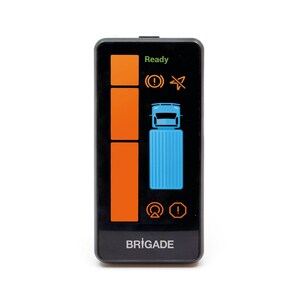Brigade Electronics discusses direct vision versus indirect vision for preventing blind spot collisions
PORTLAND, Ind., Oct. 14, 2020 /PRNewswire/ -- Large trucks and buses are involved in more than 100,000 crashes each year in the US causing more than 4,600 fatalities. In recent years, collisions involving trucks have steadily been increasing. Alongside this, reports from the World Health Organization show that construction, agriculture and mining are among some of the highest-risk work populations in the world with many injuries and fatalities caused by moving vehicles or machinery.
Sadly, these statistics show that there is still much to be done in preventing deaths and injuries caused by vehicles both on roads and in the workplace.
Driver visibility is key to maintaining road safety. What a driver can see from their position inside a vehicle plays an important role in directing road safety legislation. However, direct vision, i.e. what a driver can see directly through their vehicle's windows, is not enough to prevent collisions caused by blind spots.
If the driver is not looking, they will not see
While driver visibility can be aided by passive systems, such as mirrors and cameras, these still require driver input in order to spot objects or people. In the time it takes a driver to check mirrors and react, a vehicle could travel as far as 30 feet, even at speeds as low as 3mph.
Corey Heniser, a vehicle safety expert from Brigade Electronics INC, explains:
"While passive systems, such as mirrors, have been a legal requirement for many years, mirrors alone will not solve the blind spot problem. If the driver is not looking, they will not see that something is in the immediate vicinity of their vehicle. This is why vehicle safety systems that require a driver to take immediate action through the provision of audible alerts and warning sounds are crucial to maintaining the highest road safety standards. These active systems will notify a driver instantaneously when a vehicle or object is in their blind spot, ensuring a driver can react immediately and prevent a collision.
"Many collisions with large vehicles occur when they are maneuvering at low speeds, such as turning in a tight space or attempting to park. Preventing deaths and injuries, as well as damage to objects and vehicles, can be reduced dramatically when a driver's indirect vision from the cab is improved. We always recommend a combination of passive and active vehicle safety systems to be installed for ultimate safety."
SOURCE Brigade Electronics

WANT YOUR COMPANY'S NEWS FEATURED ON PRNEWSWIRE.COM?
Newsrooms &
Influencers
Digital Media
Outlets
Journalists
Opted In






Share this article